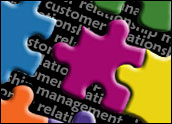
As business intelligence and analytics hit full stride this year, dashboards are becoming ubiquitous. Typically, marketing, sales, operations and — increasingly — quality management departments are all creating their own.
Each are populated with their own specific metrics of interest and key performance indicators (KPIs), yet only a few — in the majority of cases I’ve seen — measure collaboration, responsiveness of one department or division to another’s requirements in the service of customers, or goal attainment based on shared strategies.
Creating Collaboration First
Measuring and quantifying only one department’s performance actually perpetuates and strengthens silos of departments. Instead, what needs to happen is that departments need to be more forthright about what is being measured and share those metrics companywide.
Dashboards should not be an analytical island. They need to measure what is impossible to quantify otherwise: the collaboration with customers, between departments, and with suppliers and service providers.
That’s one of the critical points being lost in the rush — it seems everyone is on to find their own private “Dashboard Nation.” The analytically sexy display of one department’s or division’s graphics is impressive and looks great during senior management reviews, yet it is truly worthless in the end if nothing changes as a result of the knowledge being generated.
Making Dashboards Count
Making dashboards a tool for collaboration seems like it would cut down on the silo-strengthening aspects of measuring only one department’s set of metrics when the majority of the work being produced is coordinated with other departments.
Dashboards need to focus on what really matters, not just a graphical representation of one department’s performance, and this starts by focusing on the following additional areas:
- How aligned is your company with your customers, honestly? Using a dashboard to measure the combined performance of your company across all departments that serve customers — whether it is from the initial white paper download, first telemarketing call or first cold call to the purchase and through services being purchased — needs to be a priority.
Often there are so many different dashboards that management meetings can at times be a “Battle of the Metrics” as to who is serving the customer the best, rather than one big synchronized dashboard that says how the entire company is performing relative to customers’ requirements. This makes infinitely more sense than having marketing create dashboards — it needs to cover the entire customer acquisition and service process.
- Measuring what causes your company to disconnect with customers and why. Now, this is a metric no one wants on their individual dashboard, no one wants to even come close to quantifying what is wrong in their departments that is causing customers to leave. However, unless a company faces up to this issue and quantifies it — companywide — and uses a dashboard to illustrate what areas of key processes that needs to be fixed, nothing will happen.
Just burying this and acting like customer defections are an exception is not the answer; putting customer defections on the front page of the company-wide dashboard is. Drilling into why customers leave is probably one of the best uses of a dashboard.
- Good dashboards make companies inch towards transparency. Think of those days when you came home from elementary school with your report card in hand, working on the best spin you could think of. What was so difficult was the absolute transparency — your parents knew exactly how you were doing.
We all get much more skilled at putting a positive spin on mediocre or even bad news as we get older. Yet a dashboard — if used right — can peal away the spin, which is the natural inclination of anyone in management to do when results aren’t measuring up.
This is not necessarily bad; it can actually get any company focused on what really matters. For example, making sure all the channel management systems are synchronized with each other, and all lead management and escalation systems coordinate on opportunities, and most of all, that all customer-facing order capture systems deliver the same results to queries from customers.
- Tying marketing budgets to sales results. Imagine being able to see, over time, the impact of marketing spending on sales force effectiveness, or the progression of opportunities through the sales funnel. Tracking marketing budget effectiveness in retaining existing customers, through a synchronized set of metrics companywide, is invaluable. Tying spending to results is what a great dashboard needs to be able to do.
- Changing how people work by showing their impact. This is actually the most important aspect of any integrated, companywide approach to creating a dashboard. In the end, every department — from sales and marketing to operations, manufacturing and service — need to see how their hard work is making a difference. A good dashboard unifies a company towards a common goal. Instead of silo-strengthening metrics that only validate one departments’ existence, a companywide dashboard shows everyone how their department is making a positive change in the performance of the company.
How Are You Doing?
In summary, as CRM users globally inch towards being a “dashboard nation,” it’s important to keep in mind that for all their analytical sexiness and ability to deliver great-looking graphics — even drill-down analytical representations of complex data — the heart of a dashboard is its ability to tell you honestly how you are doing.
It needs to bring that report card moment so many of us either jubilantly embraced or worked harder than a White House press secretary to spin depending on our performance.
Louis Columbus, a CRM Buyer columnist, is a former senior analyst with AMR Research. He has worked with enterprise clients on defining solutions to their channel management, order management and service lifecycle management strategies. He also teaches graduate-level international business and marketing courses at Webster-Loyola Marymount University and University of California, Irvine. He is the author of fifteen books on technology and two books on analyst relations. His book, Getting Results from your Analyst Relations Strategies, can be downloaded for free.















































Social CRM
See all Social CRM